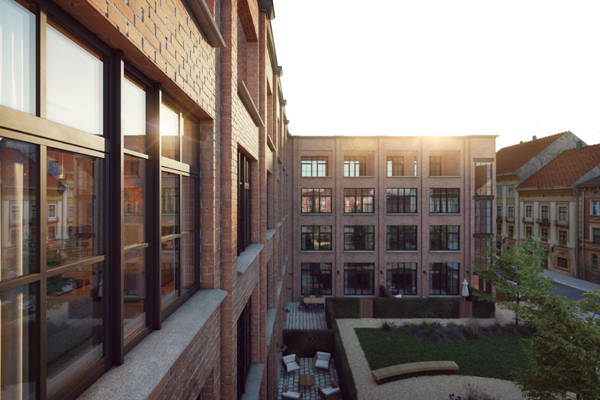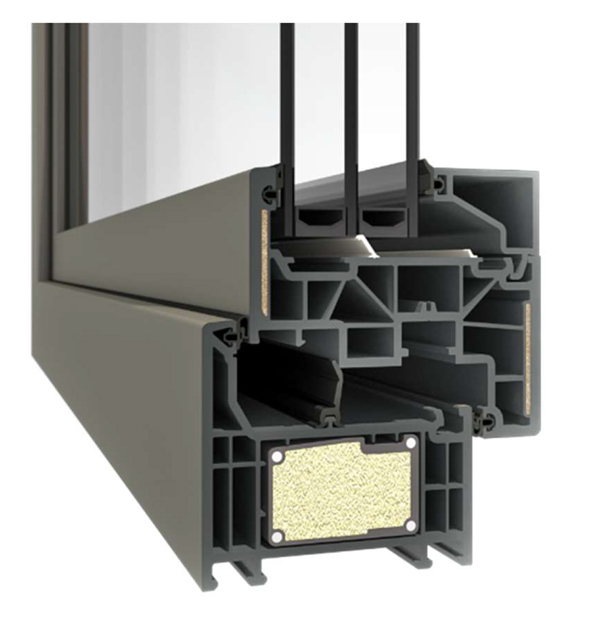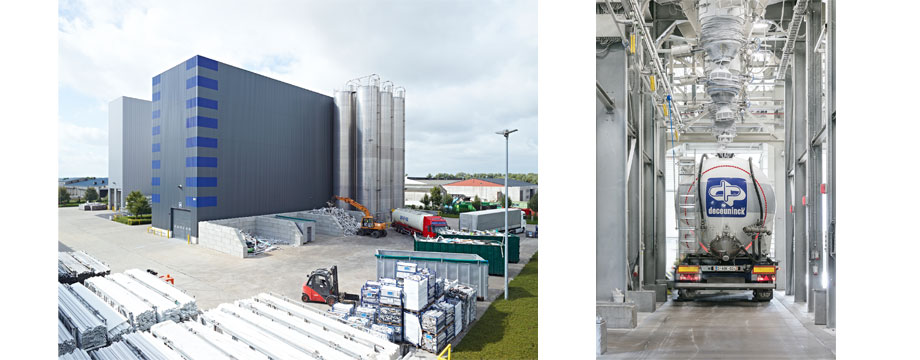Planning a new build or window replacement programme in the next two years? New requirements under the Future Homes Standard are going to impact. We report...
Every project is always a combination of competing demands for budget and funding and the trade off against performance. A balance between what can be afforded today, and what will be required in the future.
The increases seen in energy prices last year have made improving the energy efficiency of homes an urgent social priority. It’s critical importance as part of Government climate change objectives is long established.
Homes make up around 14% of all of the UK’s emissions. With a commitment to cut total UK emissions by 80% relative to 1990 levels by 2050 under the Climate Change Act (2008) reducing household carbon emissions assumes critical importance.

Elegant (in Graphite Black Matt): Deceuninck’s next generation window
This provides the backdrop to the changes to Part L seen in 2022, which introduced a new requirement of 1.2W/m2K for new build windows and doors with a glazed area of more than 60%; and 1.4W/m2K for replacement windows and doors.
It will be followed in 2025 with expected changes under the Future Homes Standard, which could see new build window u-values set as low as 0.8W/m2K.
“Home energy efficiency is critical in the immediate term but also against the longer-term objective of reducing carbon emissions,” John Duckworth, Director of Commercial Sales.
“We are developing a new generation of products that deliver a step change in window and door performance, using new technologies to deliver windows that are more secure, which maximise design flexibility, and which deliver exceptional through life performance.
“The changes that we saw to Part L last year are just a stepping-stone to those longer term 2050 net zero objectives.
“The next big change on the horizon will be the Future Homes Standard, which only two years out, needs to be factored into planning today”, he says.
This has been the catalyst for significant change in window and door design. Window systems companies are according to Deceuninck’s Commercial Sales Director, redefining the way that they approach manufacture to deliver new levels of thermal performance.
This he says is delivering carbon savings in life, but also lowering embodied carbon in new and future products.
 Elegant (pictured left) is the next generation window from Deceuninck, forming a key element of the systems company’s wider award-winning sustainability strategy.
Elegant (pictured left) is the next generation window from Deceuninck, forming a key element of the systems company’s wider award-winning sustainability strategy.
The next generation fiberglass composite window system delivers a step change in performance achieving U-values as low as 0.8W/m2K.
Elegant also delivers on aesthetics with contemporary minimalist features, which replicate aluminium in an advanced, low maintenance and energy efficient, composite system. It can also be combined with Decoroc, Deceuninck’s next generation finish, so fitted alongside aluminium products as part of dual-specification installations.
“Elegant is a tilt-and-turn system”, continues John. “It has reach in new build projects but also replacements.
“It’s great for end users because the opening and closing mechanism is very easy to use and delivers an enhanced level of security.
“Thermally, it is in a new class of product, delivering up to a Passivhaus equivalent level of performance.”
The system is built around a single ultra-energy-efficient modular frame which is available as a standard 76mm system. These can be combined with any of five different sash options.
“Elegant gives you a lot of design flexibility,” John says. “You’re getting a window that can be optimised for either commercial or residential applications with a massive amount of flexibility within those markets because of the combination of sash and frame options that we can offer.”
The next generation system is also available in Deceuninck’s extruded insulated thermal reinforcement, which maximises design potential without the need for traditional steel reinforcement using embedded steel wires in a low-density insulating foam core.
Combined, this delivers a 30% increase in thermal efficiency with 40% savings on materials and weight, when compared to windows manufactured using a traditional steel reinforcement.
“Steel is conductive but in encasing steel wires inside an insulating foam core we can create a thermal barrier significantly reducing heat loss, while still retain a high degree of design flexibility”, John says.
It’s not only the in-life carbon savings that Deceuninck has focussed on in Elegant’s design but also end-of life and how easy it is to recycle.
“We have focussed on in life performance, the very substantial carbon savings that Elegant can deliver during its lifetime.
“We want to maximise the return on those carbon savings by lowering carbon in manufacture, for example by using renewable energy and recycled raw material; and by making them easier to recycle at end of life - it’s about the circular economy”, John says.

Deceuninck’s recycling and compounding facilities
Deceuninck’s advanced recycling and compounding facilities allows the systems company to reprocess up to 45,000 tonnes of post-consumer and post-manufacturing PVC-U per year, which is the equivalent of preventing three million windows from going to landfill annually. Use of recycled material also reduces CO2 emissions by 90,000 tonnes when compared to virgin feedstocks, as well as a 90% energy saving.
Deceuninck has also committed to cut CO2 emissions from its own operations 60% by 2030 from a 2021 baseline, and cut emissions from within its supply chain by 48% per tonne by 2030, as part of its wider journey to net-zero greenhouse gas emissions by 2050.
“The part that the fabric of buildings has to play in lowering CO2 emissions of UK housing stock is today very clear in the form of legislative change coming down the line.
“This includes last summer’s revisions of Part L and from 2025, the Future Homes Standard.
“For Deceuninck it’s not simply about hitting those targets from an in-life performance perspective but adopting a whole life approach to product design, lowering carbon footprint in manufacture; through product life - and ultimately, at end of product life.
“This means re-thinking material choices and even window design, to support the UK’s journey to net zero through product innovation.”
For more information call 01249 816 969, email deceuninck.ltd@deceuninck.com or visit www.deceuninck.co.uk
- Log in to post comments













